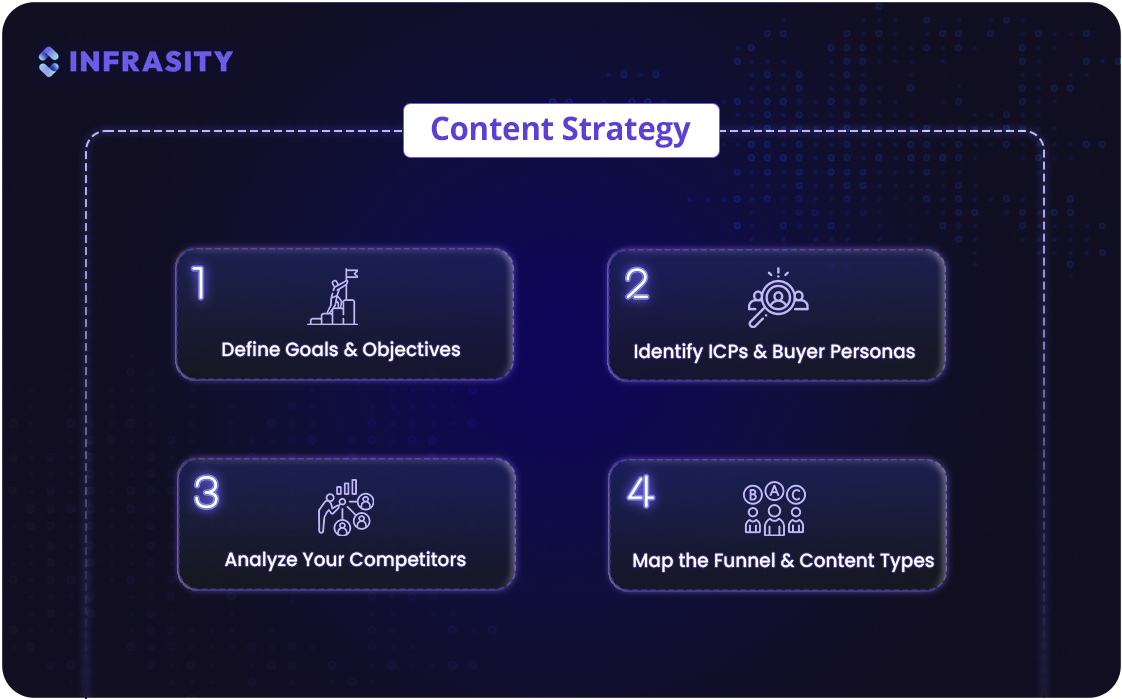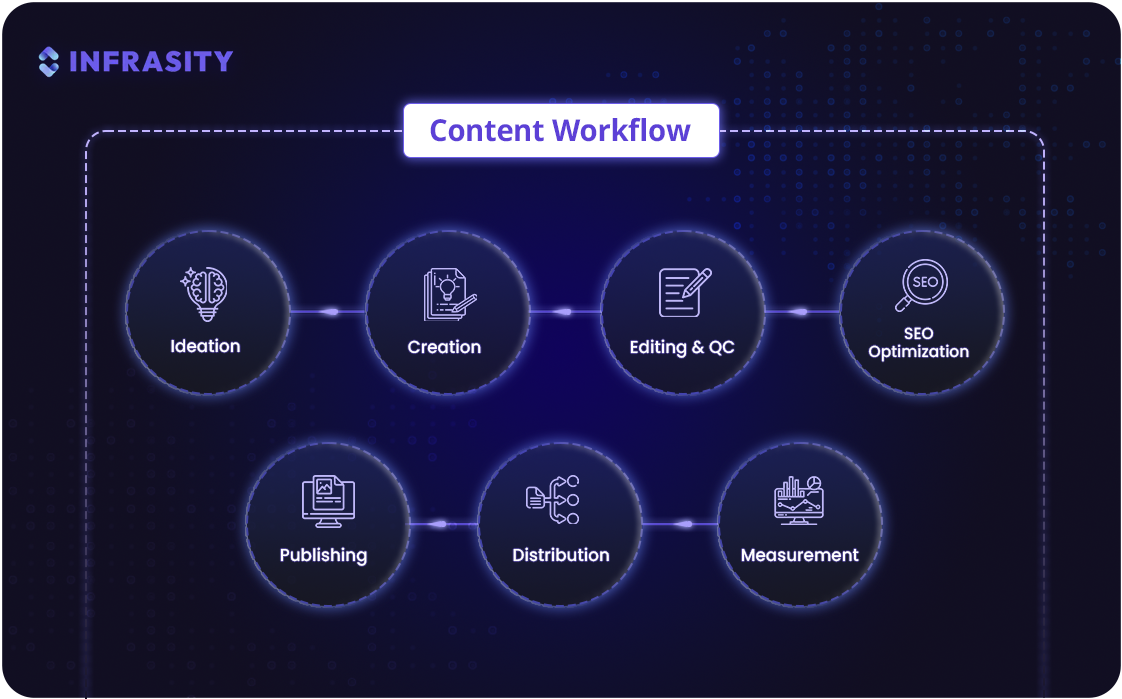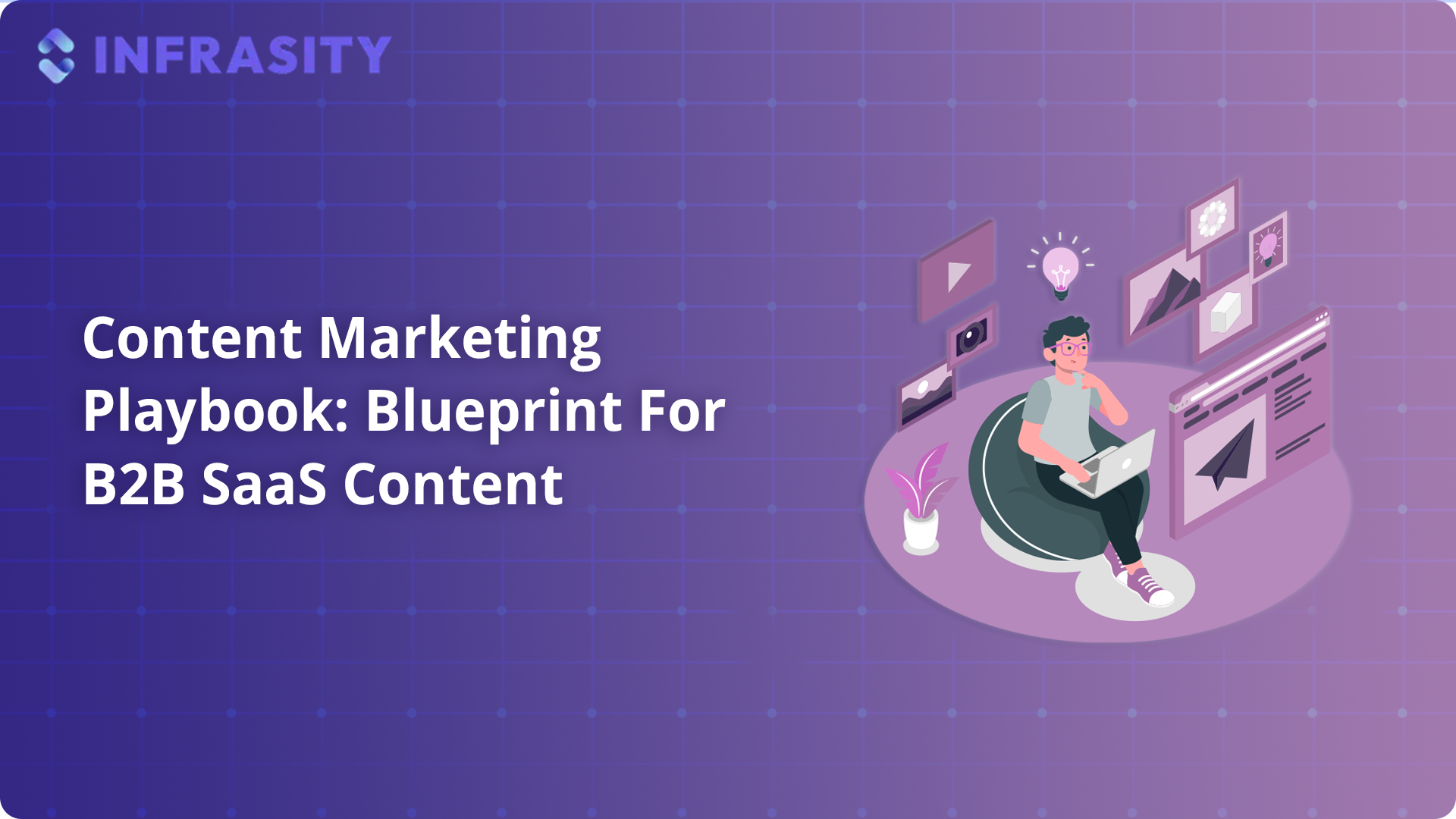Introduction
You've probably heard the phrase, "If it's not written down, it doesn't exist." That couldn't be more true in the world of content marketing.
Let's say you have created a solid strategy in mind - you know what kind of content to create, how you'll do it, and where it'll be distributed. Great. But if all of that lives in your head, how do you expect a team to execute it smoothly?
The reality is that 33% of B2B marketers plan their content strategy but never document it, and that's where things fall apart. People go off-script, new team members struggle to catch up, and freelancers are left guessing.
So what's the fix? A content marketing playbook. One file that serves as a source of truth for your content marketing efforts.
In this article, you will learn about a content playbook, its major components, and how you can create one for your B2B SaaS company.
What is a Playbook?
A playbook for content is a reference guide consisting of some specific components that ensure your marketing efforts are efficient. It helps in keeping the content marketing goals and objectives intact with a vision of what needs to be done to achieve them.
To define playbook, it would be apt to say that it is like one place for all the content stuff, right from strategy to analytics. Once you have prepared it, you'll observe some changes, including:
- Less time consumption
- Better budget utilization
- More effective content production and distribution
- Faster results
Now that you understand how a content playbook can be a great tool for your B2B SaaS content strategy, let us find out what it looks like.
Tired of wasting engineering time on content?
What Does a Playbook Look Like?
A content marketing playbook is a quick reference guide. It has four major components:
- Strategy
- Content Creation
- Distribution
- Measurement
These elements help you create a robust marketing plan, right from planning and execution to measurement. Let's dive in!
1. Strategy

Before starting anything, you need to plan a strategy on how you are going to take things forward. It involves identifying your goals, ICPs, competitors, mapping the funnel and content type, and finally creating the strategy.
Define Goals and Objectives
Your goals and objectives depend on the stage you are in. Based on that, you will decide whether you want to focus on:
- Brand awareness
- Lead generation
- Product education
- Activation or retention
It's imperative to focus on one primary goal and then align it with future goals. For example, if you're an early-stage B2B SaaS startup, your first concern would be to increase brand awareness.
Once you gain traction, you can shift your focus to the other goals accordingly.
Identify ICP & Buyer Personas
After defining your goals and objectives, identify who your target audience will be. Create an Ideal Customer Profile (ICP) and buyer personas to guide effective content creation.
An ICP helps define your ideal customers — the type of companies likely to buy your SaaS product and remain loyal customers who might even refer your product. Your ICP should include:
- Target Companies (e.g., B2B SaaS companies)
- Firmographics (company size, age, partnerships)
- Demographics (location, job titles, roles, interests)
- Technographics (pain points, tools being used, how your product can replace them)
With ICP comes the buyer persona. It’s like you are zooming into the team members of the target company. You identify their goals, demographics, pain points, and preferences. There are three key buyer personas - the end-user, the manager, and the decision maker. They could be CTO, Product Manager, VP of marketing, developers, and CEO.
Analyze Your Competitors
Conducting a competitor analysis while planning a content strategy is important. The analysis will keep you stay relevant in the industry, build a strong USP, and identify potential opportunities and leverage them to stay ahead of your competitors.
To identify your competitors, search your product category (e.g., "workflow automation software") or check SaaS review sites like G2 and Capterra. Then research their offerings to understand how your product stands out.
Analyze their marketing strategies - what sort of keywords they are targeting and what kind of content they are creating to gain more traffic. There are many useful tools for SEO, such as Semrush or Ahrefs to find out the keywords and backlinks. Additionally, understand their content's tone and CTAs to gain actionable insights.
Map the Funnel & Content Types
You need to create content based on the marketing stage you are at. Whether it's awareness, consideration, or conversion stage, you need to map the funnel accordingly - ToFu, MoFu, BoFu.
Here's the type of content you can create based on each marketing funnel:
ToFu: Technical blog posts, infographics, webinars, podcasts, welcome emails
MoFu: Product demo videos, white papers, explainer videos, product comparison guides, nurture emails
BoFu: FAQ pages, case studies, product docs, coupons, and discount code emails
2. Content Creation
Once you have planned a robust content marketing strategy, it's time to decide what type of content you will produce to achieve your goals and objectives. It will also include the content production process. This chapter of your content marketing playbook will help speed up the work by highlighting:
- Content type
- Guidelines
- Content workflow
Content Type
As briefly mentioned, the content type should align with the marketing funnel. However, it is important to analyze the psychographic profile of your ICPs and curate content accordingly.
For example, if you are targeting a CTO at the awareness stage, think about their priorities. They could be staying ahead of technology trends, optimizing systems, and driving digital transformation. Instead of pitching a solution directly, offer thought leadership that resonates with their strategic concerns through blog posts.
Guidelines
You should include guidelines in your content playbook to ensure consistency across all touchpoints, whether it's a feature launch email or a blog post. These guidelines should cover your tone and voice, a list of approved words and branded phrases, image and design rules, formatting standards, trusted sources, and even prohibited topics.
This helps every writer, marketer, or freelancer stay aligned with the brand's identity. It saves time, reduces back-and-forth, and maintains a professional, cohesive presence without sounding like ten different people creating content for the same brand.
Content Workflow

You have planned a robust strategy, but if you don't create a structured workflow, the strategy may fall flat. You may ask, why? This is because the content workflow will guide the team in beginning the ideation process and smoothly executing it. It will turn chaos into clarity and meeting deadlines. Here's what your content workflow should include:
- Ideation: Brainstorm content ideas that align with your goals, funnel stages, and ICPs.
- Creation: Writers, designers, and developers collaboratively design the concept while adhering to guidelines.
- Editing & Quality Check: Refine the content for clarity, consistency, and accuracy. This includes grammar fixes, fact-checking, formatting, and ensuring message consistency.
- SEO Optimization: Ensure the content consists of the right keywords, meta tags, internal links, and on-page SEO practices to make it discoverable.
- Publishing: Publish the content live through your CMS, GitHub, or social channels as per your content calendar.
- Distribution: Promote content across relevant touchpoints - website, social media, email, communities, ads, and wherever your ICPs are active.
- Measurement: Track performance, gather insights, and feed learnings back into your strategy to improve future content.
Content creation involves a major aspect, which is creating a structured workflow. Be it any type of content, like technical blog posts, product docs, or explainer videos, you will need to create guidelines for the team to work effectively. For instance, if you plan on collaborating with a content marketing agency like Infrasity, you would be able to communicate effectively by providing them with your content guidelines. It will save you time and effort to explain everything.
3. Distribution
As much as creating great content is crucial, distributing it on the right platform is equally important. Your content distribution plan should include where, how, and when you will distribute your content across different platforms that your ICPs utilize.
Identify your top distribution channels, such as:
- LinkedIn: It is an ideal platform to distribute thought-leadership content to target professionals like founders, CTOs, and product managers. Join niche groups to expand your reach.
- Email: Works best for nurturing leads. Send newsletters, product announcements, feature updates, webinar invites, limited-time offers, etc.
- Dev Communities: Join Dev communities like Dev.to and Hacker News. Publish tutorials and insightful content among the developers to gain traction.
Additionally, make sure that you leave the website's link to get a backlink, which will increase its visibility. Do not forget about using scheduling tools like Hootsuite and Buffer to maintain efficiency and consistency across all channels.
4. Measurement
Once you are done with everything, from content ideation to its distribution, it is imperative to gauge its effectiveness. Why?
Measuring content effectiveness helps you calculate the ROI, understand what type of content your ICPs are interacting with, and how you can improve your content deliverables. Therefore, utilize the analytics tool to gauge the performance - Google Analytics, HubSpot, and Sprout Social.
Focus on the key performance indicators (KPIs) at each funnel stage:
- ToFu: Page views, impressions, traffic sources
- MoFu: Time on page, click-through rates, downloads
- BoFu: Demo requests, sign-ups, pricing page visits
Additionally, practice A/B testing with content formats, headlines, visuals, and CTAs to identify which fits better.
Every devtool startup needs content. Most do it wrong.
Conclusion
A Content Marketing Playbook serves as a one-stop reference guide for B2B SaaS companies. It helps in documenting various aspects of content marketing - strategy, content creation, distribution, and measurement.
Content marketing has become increasingly relevant within the B2B SaaS industry, so a content playbook helps your organization make sure company goals and objectives are clear, and the content will resonate with ICPs at multiple touchpoints through different types of content.
Finding the right content distribution channels and tools to measure the content's effectiveness is also crucial. Additionally, the playbook helps ensure that the content marketing team works collaboratively, maintaining a cohesive presence across all platforms.
FAQs
1. What Does a Playbook Include?
A playbook includes four major chapters - Strategy, Content Creation, Distribution, and Measurement. These chapters comprise several elements, such as content guidelines, content types as per the marketing funnel, etc.
2. What is the Role of a Content Playbook?
A content playbook serves as the single source of truth for your entire content marketing operation. It includes details related to your strategy, workflows, and distribution, defines your audience, and sets brand and style guidelines.
3. What is the Difference Between a Workflow and a Playbook?
A content workflow is actually a part of the content playbook. It details how to develop and deliver content, from ideation and creation to editing, publishing, and distribution.
The playbook, on the other hand, is where you bring everything together - your strategy, goals, buyer personas, funnel-stage content, tone of voice, distribution plans, measurement tactics, and yes, the workflow, too.
4. Can B2B SaaS Startups Benefit From a Content Playbook?
Absolutely! B2B SaaS startups can leverage a content playbook. If there are limited resources and everyone's doing multiple roles, a documented guide will bring everyone aligned. It saves time and helps onboard new team members quickly.
5. What is the Difference Between a Marketing Plan and a Marketing Playbook?
A marketing plan outlines your goals, audience, and overall strategy. A playbook goes a step further and shows how you'll bring that strategy to life. It's where things like content types, workflows, tools, guidelines, and distribution all come together to guide day-to-day execution.


